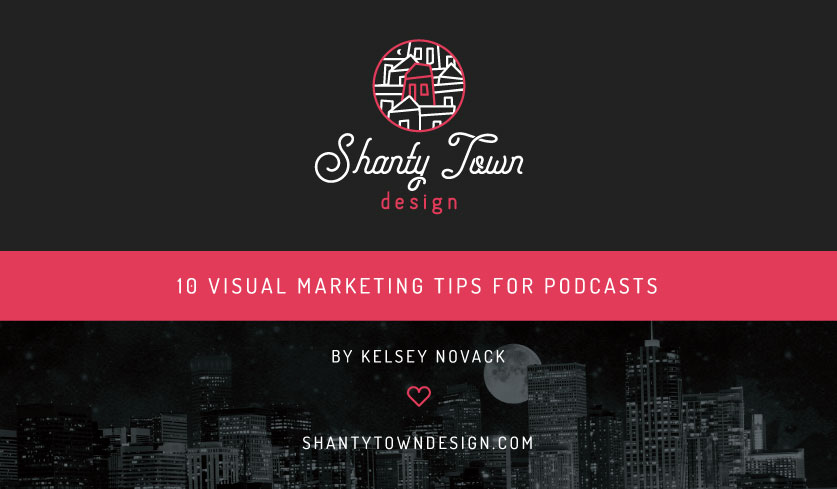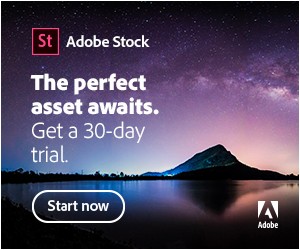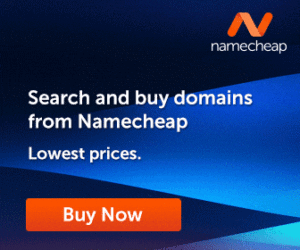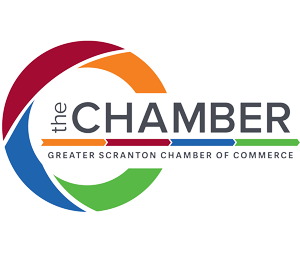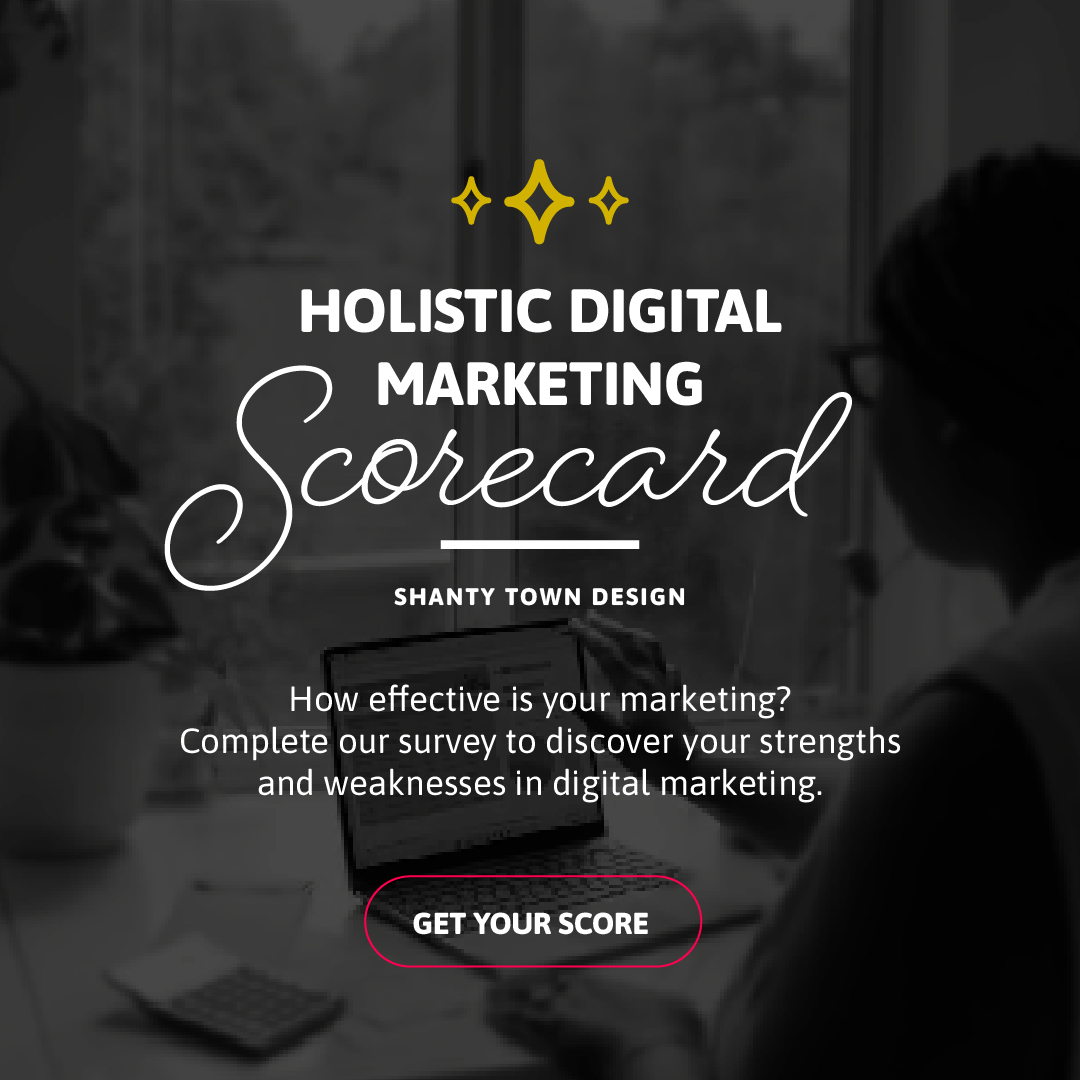What’s the deal with podcasting anyways?
Since the early 2010’s, podcasting popularity has grown exponentially. There are a lot of benefits for a business, ranging from building a relationship with your audience to creating authority in your field. It is especially helpful with generating traffic organically. According to Forbes, 62 million Americans listen to at least one podcast a week and “44% have a household income of more than $75,000 a year.” Furthermore, podcasting makes it really easy to find a target market niche. People are already engaging with the content they are interested in. That’s a lot of marketing potential!
So how do you start?
For obvious reasons, you probably want to give it a try. You may already be formulating a to-do list in your head — You’ll want to figure out a good recording set-up. You’ll need to pick an RSS hosting company and submit your podcast to directories like Apple Podcast, Spotify and iHeartRadio. You’ll need to decide how you will format your episodes and set a release schedule. You might even want to start backlogging episodes, so your week-to-week doesn’t become overwhelming. But what’s your plan for visual marketing?
The visual appeal of a podcast can help it stand out from the abundance of similar podcasts on the market. Having a good visual strategy will help make your podcast look more credible, and in turn, make the content and you more trustworthy. You’ll get more clicks, attract more listeners, and receive a larger return on your efforts.
So we put together a short list of the visual aspects to consider and how they can help you level-up your podcast marketing:
1. Podcast Logo
While the podcast cover artwork is the most important visual element you’ll have, the logo should still be created first. The logo is crucial as a separate element, since it will set the pace for the podcast’s branding. Moreover, it will be used on every element where the cover artwork won’t resize well, like on a website header or as a social media profile picture.
Your podcast may be an offshoot of an already existing brand or business, so it might make sense to use that existing branding and logo with some small tweaks or basic additions, like we did with the Cannabis Marketing Association’s Party Like a Marketer podcast. We were able to add a simple element to CMA’s existing logo. This design choice helped maintain CMA’s brand recognition and reputation, while also letting the audience know the podcast was a new addition to the organization’s efforts.
If your podcast is independent of a parent company, then it should get its own unique logo that resonates with its target market. In which case, you should consider creating a logo that is relevant to its industry, simple to view at different sizes, memorable, and easily recognizable. I did just this when building out the brand for the podcast Where Wild Women Wander, a podcast focusing on everyday women’s relationships with the outdoors.
2. Cover Artwork
Creating great cover artwork for your podcast is essential. The cover artwork is the image that appears on your podcast player of choice. It is the first element that any potential listener will see, even before the name of your show. This visual is where your audience will make a quick judgement call to decide to learn more about your podcast or to skip past it.
Due to the popularity of podcasting, there is a lot of competition in most industries. The cover artwork is your biggest opportunity to stand out from the crowd. Take the time to research your competition and get a feel for which podcast covers are appealing to you. Additionally, make sure your cover artwork represents the content. If the podcast focuses on a specific person, their portrait makes sense. If the podcast focuses on a topic, then showcase that topic in an interesting way using photography, typography, or illustration.
Remember that this cover artwork will be displayed at very small sizes. Oftentimes it will be seen on a mobile phone at thumbnail sizing. The sizing will depend on device sizing, podcast player app or website, and the screen at which they are viewing the podcast. As you can see below, there are three very different views of the Where Wild Women Wander podcast cover artwork within a matter of a few clicks in the Spotify app.
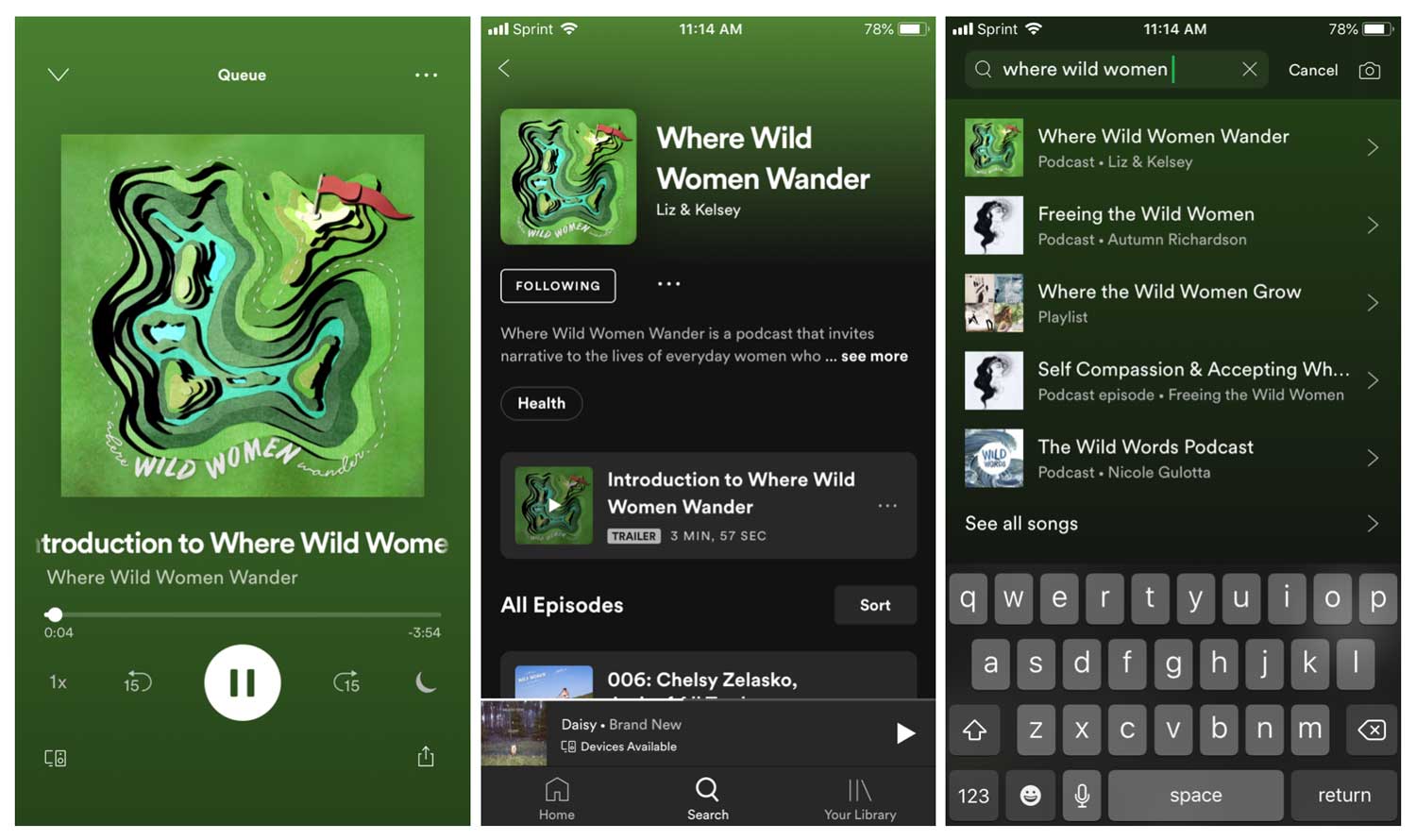
Lastly, it is important to remember that there are very definitive specifications with sizing and file output when creating cover artwork. This will be resized all over the web and multiple devices. Moreover, many podcast directories, like Apple Podcasts have certain image parameters to meet. The minimum sizing is 1400 x 1400 pixels, but we advise saving a version at the maximum size of 3000 x 3000 pixels as well. The image must be a JPEG or PNG format saved in RGB color space at 72 dpi.
3. Episode-Specific Cover Artwork
While this is an optional feature of your podcasting visual marketing plan, episode-specific cover artwork is highly recommended. Episode-specific cover artwork is cover artwork that only appears for each particular episode. It is different from the main podcast cover artwork, yet still ties in many of the same elements and overall branding. It should definitely have the podcast logo, colors, fonts, etc. Likewise, all episode-specific cover artworks should emanate the same vibe. For example, if you’re using photography, use the same filter or color overlay on every photo.
Why should you even consider the extra time or efforts to create episode-specific cover artwork? By creating new, branded graphics each episode release, listeners don’t get bored by your brand or worse, go “blind” to your brand. Furthermore, it notifies your audience that new content is being published. It can additionally be used as a visual appeal to possible listeners by showing who or what a specific episode features.
Bonus: Episode-specific cover artwork can easily be used for social media to promote episode releases without cluttering your feed with the same imagery.
Note: Unfortunately, Apple Podcasts do not support episode-specific cover artwork. Don’t let that discourage you from taking this step, as most other major podcast streaming services do.
4. Social Media Account Branding
If you have a podcast or are thinking about starting one, you’ll need to promote it somehow. The fastest and cheapest way is social media. By using your brand visuals, customers know the account belongs to your company (or podcast), looks more credible, and builds brand recognition and relationship.
Having elements sized correctly and responsively makes a big impact for your brand. Don’t get lazy and simply resize the cover artwork or logo to fit profile picture and header dimensions. Oftentimes, elements must be removed, type has to be resized, and imagery needs to be simplified to work well in these spaces. Besides, header images have a lot of potential to tell more about your brand, create a visual surprise for the viewer, or build brand awareness. Utilize these opportunities!
5. Social Posts
While running a social account takes practice and lots of trial and error, sharing visually-engaging social posts is a good place to start. Our advice is to begin by creating a social media plan. Make a calendar or spreadsheet with all the social post ideas you have and follow it.
One of the best things you can do for social media is post often. To make that task easier, create a few branded templates that can be used regularly for your social media feed. With podcasts, it’s common to share episode quotes, audio soundbites, images relevant to episode content, business updates, and behind the scenes photos. If you can think of how to relate your content to popular weekly hashtags like #SundayFunday or #FearlessFriday, do it.
Consistent social media content creation and monitoring might sound like a lot of work (it is), but there are a lot of tools where you can easily schedule content in advance and lots of ways to outsource for template and content creation. Our favorite scheduling program is Later.com.
6. Website
While you probably are paying a hosting service to house your podcast RSS feed, you should still have a web presence. This can be helpful for listeners or companies to learn more and get in contact with you. Having a place for podcast topic suggestions and contributions allows you to stay in touch with your listeners needs and wants. If you’re interested in gaining sponsorship, your web site can share important information on how to get in touch and what plans you offer. Plus there is a feature that is often overlooked — your website is a place where listeners are visiting to listen!
Having the RSS feed and episode archives embedded on your site is a practice that not only creates another platform for listening, but also allows for search engine optimization (SEO). That means having a website can help your podcast get found in the ever-expanding world wide web! By writing and regularly updating show notes and blog posts on your site, you are automatically helping Google and other search engines find your site and suggest it to others!
7. Email Signature
The email signature is another oft-forgotten aspect of a brand. It is particularly important for a brand that is mostly digital and one that does most of their communication via email, like a podcast. Feel free to think of your email signature like a digital business card. Again, it reinforces the idea that your brand is professional and builds brand recognition.
If you are creating an email signature, remember to follow the brand that is already in place. Don’t forget to add quick links to your website and social media accounts!
8. Apparel/Giveaways
Giveaways are a really fun marketing strategy. What items can you create to promote your brand? How can you get these items in the hands of your audience to promote your brand? Giveaways! An easy way to do this is to present episode guests or contributors with a simple, branded gift, like a sticker. If you want to push this idea further, you could utilize the ever-evolving trend of social media giveaways. Branded T-shirts and stickers are a great place to start. A non-brand specific, but podcast-related item could be headphones. If you have the time and resources, seek out a show-specific giveaway item. For example, if you are a podcast that talks about coffee, give away a branded mug and gift card to Starbucks. If you are a large, reputable business, give away tickets to an industry conference.
Now that the ideas are churning, remember to use giveaways as a strategy that benefits you. Social media giveaways can be used to gain momentum by asking for follows, shares, comments, and likes. These actions help with the algorithm, and they also ensure audience growth. Another example of this is by doing a random drawing giveaway for anyone that reviews your podcast within a certain time period. A plethora of five-star testimonials are a surefire way to convince others to listen!
9. Media Kit
If you are looking for sponsorship, you will definitely need a media kit. A media kit is a small, condensed packet of information, reserved for press and possible sponsors, featuring the who, what, when, where, why, and how of your podcast. Your goal is to answer the question of why your show is unique, how others can work with you as a marketing sponsor, and what you offer to the podcasting world.
Make sure you include a summary of who you are and who your audience is. Employ statistics to help you explain your traffic and audience reach. Don’t forget to include contact information, links to social media, and your website.
10. Traditional Advertising
In the digital age, it’s easy to forget the impact traditional advertising mediums can have. Think billboards, digital banner ads, business cards, flyers, networking, email lists, etc. If you have the funds and capabilities, you can’t go wrong with a more traditional route. Billboards will reach thousands of people who often commute and most likely are searching for something to listen to on those car rides. Sharing business cards and placing them in public spaces relevant to your podcast industry-niche will help reach more people, too. Don’t be afraid to try old-school methods to gain a larger following for your digital platform.
A Thorough Visual Marketing Strategy
While podcasting seems to be an audio-based medium, it truly starts with the visuals. As you can see, they are used time and time again, to produce and maintain all kinds of audience interactions and in the professional setting, too. Having a solid visual marketing strategy backed by skilled design can help you build credibility, gain a sponsor, or grow your audience.
If you’re starting or have a podcast and need help on your visual strategy, contact us and we can help!
